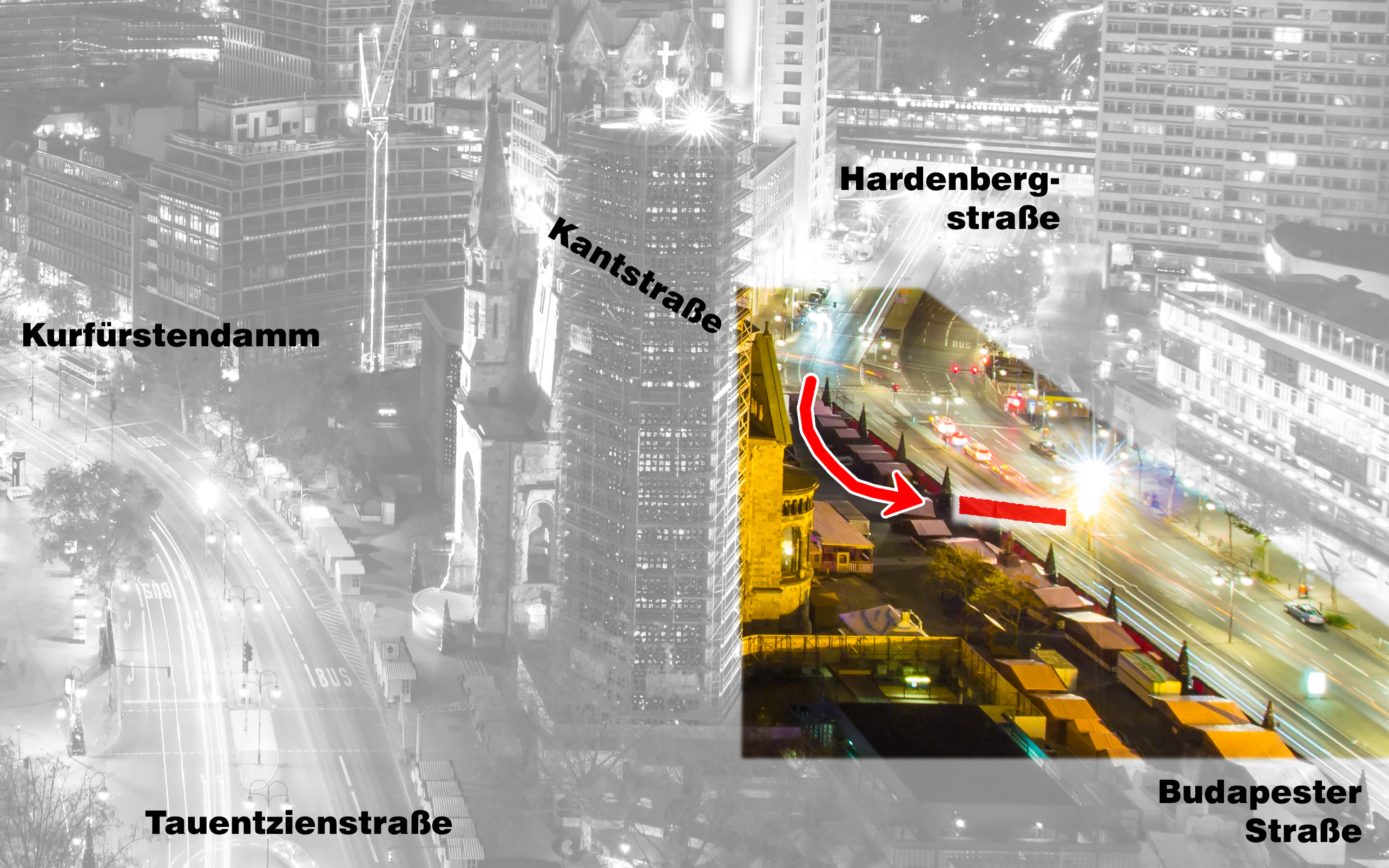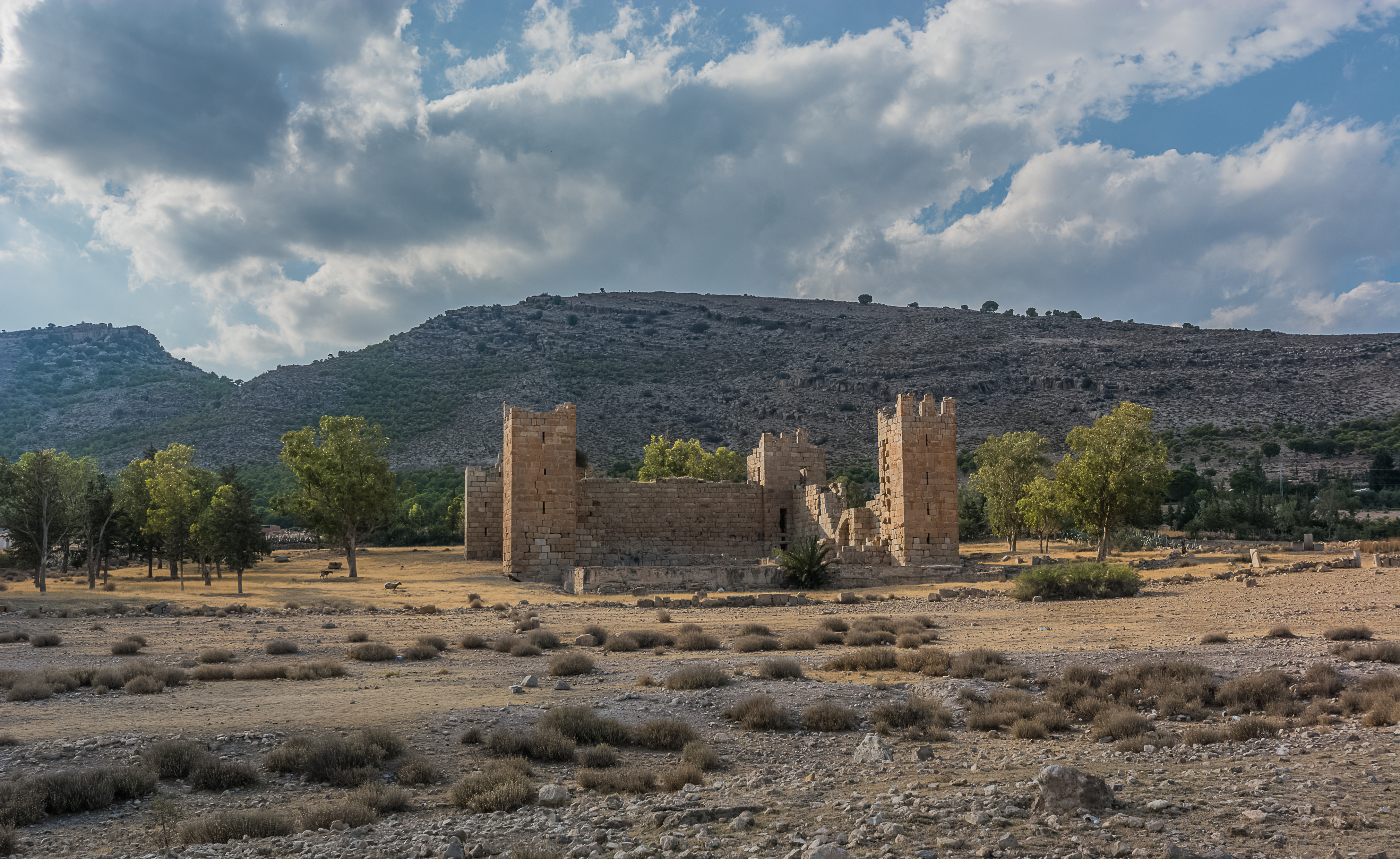|
Oueslatia
Oueslatia is a town and commune in the Kairouan Governorate, Tunisia. As of 2004 it had a population of 8,444. It is also the capital of a delegation with 36,195 inhabitants in the 2006 census. It is at the center of a plain between the mountainous alignments of Djebel Ousselat and Djebel Serj belonging to the southern flank of the Tunisian ridge. In addition to the city, the villages of Maarouf, El Menzel, Djebel Serj, Zaghdoud, Djebel Ousselat, Djebel Erreihane, Ain Djeloula, Oum El Ksal and El Behaïer are attached to it. There are caves, interesting for speleology, like the cave of the mine, as well as numerous cave paintings of which the best preserved represent scenes of hunting where appear rhinoceros, ostriches and buffalos, as many animals which testify of a wetter environment in the Neolithic era. Thirty kilometers from Oueslatia is the ancient site of Ksar Lemsa where the remains of a fortress of the Byzantine period and a Roman theater are preserved. Today, a wat ... [...More Info...] [...Related Items...] OR: [Wikipedia] [Google] [Baidu] |
Kairouan Governorate
Kairouan Governorate ( ') is one of the twenty-four governorates of Tunisia. It is landlocked and in the centre-east of the country. It covers an area of 6,712 km2 and has a population of 570,559 (2014 census). The narrower province of Sousse borders it to the east, the nearest coastline The capital is Kairouan. Lowland parts of the province are semi-arid, experiencing in most years light rains in the winter months and scant rainfall in other months but higher parts attract relief precipitation in and around the Djebel Zhagdoud and a large part of the Djebel Serj national parks, in the north-east of the province which are geologically outcrops of the Dorsal Atlas mountains in the province to the north. Administrative divisions The Kairouan Governorate is divided into eleven ''delegations'' ('' mutamadiyat''), listed below with their populations at the 2004 and 2014 Censuses, and further sub-divided into sectors (''imada''). Twelve municipalities are included within Kair ... [...More Info...] [...Related Items...] OR: [Wikipedia] [Google] [Baidu] |
Governorates Of Tunisia
Tunisia is divided into 24 governorate, governorates (''wilayat'', sing. ''wilayah''). This term in Arabic can also be translated as province or federated state (though the latter does not apply, as Tunisia is a unitary state). The governorates are divided into 264 Delegations of Tunisia, delegations (''mutamadiyat''), and further subdivided into municipality, municipalities (''baladiyat''), and sectors (''imadats''). Tunisia is divided into 6 regions. It is mostly temperate near the capital Tunis, but becomes more arid in the southern regions due to the Saharan Desert. See also * Grand Tunis * ISO 3166-2:TN References {{DEFAULTSORT:Governorates Of Tunisia Governorates of Tunisia, Subdivisions of Tunisia Lists of administrative divisions, Tunisia, Governorates Administrative divisions in Africa, Tunisia 1 First-level administrative divisions by country, Governorates, Tunisia Tunisia geography-related lists Governorates, Tunisia ... [...More Info...] [...Related Items...] OR: [Wikipedia] [Google] [Baidu] |
Populated Places In Kairouan Governorate
Population typically refers to the number of people in a single area, whether it be a city or town, region, country, continent, or the world. Governments typically quantify the size of the resident population within their jurisdiction using a census, a process of collecting, analysing, compiling, and publishing data regarding a population. Perspectives of various disciplines Social sciences In sociology and population geography, population refers to a group of human beings with some predefined criterion in common, such as location, race, ethnicity, nationality, or religion. Demography is a social science which entails the statistical study of populations. Ecology In ecology, a population is a group of organisms of the same species who inhabit the same particular geographical area and are capable of interbreeding. The area of a sexual population is the area where inter-breeding is possible between any pair within the area and more probable than cross-breeding with in ... [...More Info...] [...Related Items...] OR: [Wikipedia] [Google] [Baidu] |
List Of Cities In Tunisia
This is the list of 350 cities and towns in Tunisia. In the list by governorate, capitals are shown in bold. List of most-populated cities List of municipalities by governorate See also * *List of cities by country *Governorates of Tunisia *List of metropolitan areas in Africa *List of largest cities in the Arab world References External links {{Africa in topic, List of cities in Tunisia, List of cities in Tunisia Cities A city is a human settlement of notable size.Goodall, B. (1987) ''The Penguin Dictionary of Human Geography''. London: Penguin.Kuper, A. and Kuper, J., eds (1996) ''The Social Science Encyclopedia''. 2nd edition. London: Routledge. It can be def ... ... [...More Info...] [...Related Items...] OR: [Wikipedia] [Google] [Baidu] |
The Guardian
''The Guardian'' is a British daily newspaper. It was founded in 1821 as ''The Manchester Guardian'', and changed its name in 1959. Along with its sister papers ''The Observer'' and ''The Guardian Weekly'', ''The Guardian'' is part of the Guardian Media Group, owned by the Scott Trust. The trust was created in 1936 to "secure the financial and editorial independence of ''The Guardian'' in perpetuity and to safeguard the journalistic freedom and liberal values of ''The Guardian'' free from commercial or political interference". The trust was converted into a limited company in 2008, with a constitution written so as to maintain for ''The Guardian'' the same protections as were built into the structure of the Scott Trust by its creators. Profits are reinvested in journalism rather than distributed to owners or shareholders. It is considered a newspaper of record in the UK. The editor-in-chief Katharine Viner succeeded Alan Rusbridger in 2015. Since 2018, the paper's main news ... [...More Info...] [...Related Items...] OR: [Wikipedia] [Google] [Baidu] |
Anis Amri
On 19 December 2016, a truck was deliberately driven into the Christmas market next to the Kaiser Wilhelm Memorial Church at Breitscheidplatz in Berlin, leaving 12 people dead and 56 others injured. One of the victims was the truck's original driver, Łukasz Urban, who was found shot dead in the passenger seat. The truck was eventually stopped by its automatic brakes. The perpetrator was Anis Amri, an unsuccessful asylum seeker. Four days after the attack, he was killed in a shootout with police near Milan in Italy. An initial suspect was arrested and later released due to lack of evidence. Nearly five years after the attack, a man who was critically injured during the attack died from complications related to his wounds, becoming the 13th victim. The Islamic State of Iraq and the Levant claimed responsibility for the attack and released a video of the perpetrator, Anis Amri, pledging allegiance to the terror group's leader, Abu Bakr al-Baghdadi. Background The Berlin attack t ... [...More Info...] [...Related Items...] OR: [Wikipedia] [Google] [Baidu] |
Ancient Rome
In modern historiography, ancient Rome refers to Roman civilisation from the founding of the city of Rome in the 8th century BC to the collapse of the Western Roman Empire in the 5th century AD. It encompasses the Roman Kingdom (753–509 BC), Roman Republic (509–27 BC) and Roman Empire (27 BC–476 AD) until the fall of the western empire. Ancient Rome began as an Italic settlement, traditionally dated to 753 BC, beside the River Tiber in the Italian Peninsula. The settlement grew into the city and polity of Rome, and came to control its neighbours through a combination of treaties and military strength. It eventually dominated the Italian Peninsula, assimilated the Greek culture of southern Italy ( Magna Grecia) and the Etruscan culture and acquired an Empire that took in much of Europe and the lands and peoples surrounding the Mediterranean Sea. It was among the largest empires in the ancient world, with an estimated 50 to 90 million inhabitants, roughly 20% of t ... [...More Info...] [...Related Items...] OR: [Wikipedia] [Google] [Baidu] |
Byzantine
The Byzantine Empire, also referred to as the Eastern Roman Empire or Byzantium, was the continuation of the Roman Empire primarily in its eastern provinces during Late Antiquity and the Middle Ages, when its capital city was Constantinople. It survived the fragmentation and fall of the Western Roman Empire in the 5th century AD and continued to exist for an additional thousand years until the fall of Constantinople to the Ottoman Empire in 1453. During most of its existence, the empire remained the most powerful economic, cultural, and military force in Europe. The terms "Byzantine Empire" and "Eastern Roman Empire" were coined after the end of the realm; its citizens continued to refer to their empire as the Roman Empire, and to themselves as Romans—a term which Greeks continued to use for themselves into Ottoman times. Although the Roman state continued and its traditions were maintained, modern historians prefer to differentiate the Byzantine Empire from Ancient Rome a ... [...More Info...] [...Related Items...] OR: [Wikipedia] [Google] [Baidu] |
Limisa
Limisa (today Aïn-Lemsa) is a town and archaeological site in Kairouan Governorate, Tunisia. It is located 50 kilometers west of kairouan. The town was a Roman Catholic diocese. The street pattern of the village is fairly regular in its layout and terrace fields move down the hill from the town to the nearby wadi Oued Maarouf. The Parc National Djebel Serj is to the north of the town, but the town is best known for the ruins of a Byzantine fort known as Ksar Lemsa. The Cave Mine is nearby. History During antiquity, Limisa was a Roman- Berber civitas in the province of Byzacena. The remains of the town have been identified with ruins at Henchir-Boudja near modern Limisa. Little is known of the ancient Roman city of Limisa. A few excavations have been carried out and only the Byzantine citadel and the small Roman theater are known. The municipal organization is also only slightly understood, as epigraphic evidence indicates Roman-dominated Limisa was initially governed by th ... [...More Info...] [...Related Items...] OR: [Wikipedia] [Google] [Baidu] |
Neolithic
The Neolithic period, or New Stone Age, is an Old World archaeological period and the final division of the Stone Age. It saw the Neolithic Revolution, a wide-ranging set of developments that appear to have arisen independently in several parts of the world. This "Neolithic package" included the introduction of farming, domestication of animals, and change from a hunter-gatherer lifestyle to one of settlement. It began about 12,000 years ago when farming appeared in the Epipalaeolithic Near East, and later in other parts of the world. The Neolithic lasted in the Near East until the transitional period of the Chalcolithic (Copper Age) from about 6,500 years ago (4500 BC), marked by the development of metallurgy, leading up to the Bronze Age and Iron Age. In other places the Neolithic followed the Mesolithic (Middle Stone Age) and then lasted until later. In Ancient Egypt, the Neolithic lasted until the Protodynastic period, 3150 BC.Karin Sowada and Peter Grave. Egypt in th ... [...More Info...] [...Related Items...] OR: [Wikipedia] [Google] [Baidu] |
Ostrich
Ostriches are large flightless birds of the genus ''Struthio'' in the order Struthioniformes, part of the infra-class Palaeognathae, a diverse group of flightless birds also known as ratites that includes the emus, rheas, and kiwis. There are two living species of ostrich: the common ostrich, native to large areas of sub-Saharan Africa and the Somali ostrich, native to the Horn of Africa. The common ostrich was also historically native to the Arabian Peninsula, and ostriches were present across Asia as far east as Mongolia during the Late Pleistocene and possibly into the Holocene. They lay the largest eggs of any living land animal. With the ability to run at 70 km/h (43.5 mph), they are the fastest birds on land. They are farmed worldwide, particularly for their feathers as they are used as decoration and feather dusters. Their skin is also used for leather products. They are the heaviest living birds. Taxonomic history The genus ''Struthio'' was first described b ... [...More Info...] [...Related Items...] OR: [Wikipedia] [Google] [Baidu] |







